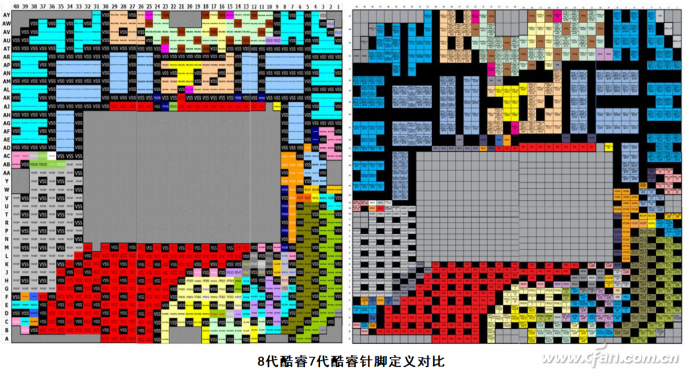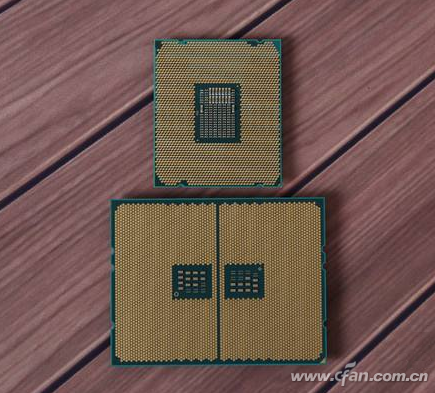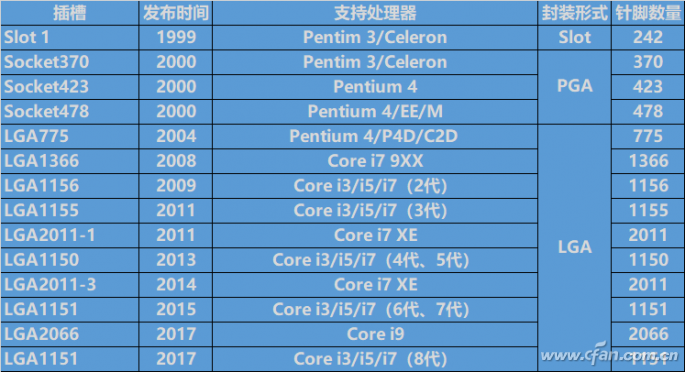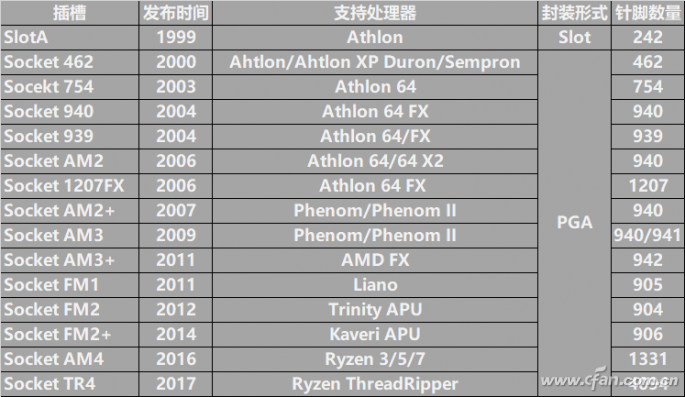This morning, the "News Tea Fan" shared some exciting follow-up news about AMD's AM4 interface, which has brought a lot of joy to users. The smooth upgrade process made it easy for people to switch, and no wonder Ryzen has been so well-received this year. However, this news also caught Xiao Bian's attention. After spending half a day reviewing data and carefully counting the number of CPU interfaces, he discovered that both Intel and AMD have introduced their own unique designs, resulting in a total of 29 different types!

Can't Change the Mouth? Can't Do It!
Every time a new generation of CPUs is released, the question of whether the old motherboard can support the new chip often comes up. This directly affects how smoothly users can upgrade and how much it costs them. Unfortunately, the results are usually disappointing. Why does this happen?
The main reason is technical. As CPU technology evolves, the interfaces often become incompatible. For example, changes in memory specifications, increased PCIe lanes, multi-core support, and higher power consumption all require updates to the CPU interface.
Take the memory controller, for instance. When it's integrated into the CPU, any change in memory support or bandwidth requirements means more pins are needed. This often leads to a complete redesign of the interface.

One of the most extreme examples is the 8th-generation Core processors. Although they use the same LGA1151 socket as the previous generation, the pin layout changed significantly due to the increase in core count. The 8th-gen had 14 more negative pins and 18 more power pins than the 7th-gen, designed to handle higher power consumption. If you tried to install an 8th-gen Core on a 100 or 200 series motherboard, it could lead to system instability or even damage your PC.

As CPUs become more complex, electrical performance demands rise, and the number of pins continues to grow. In 1999, Intel and AMD’s Slot1/A interface only had 242 pins. Today, Intel’s Core i9 has 2066 pins, while AMD’s Threadripper goes up to 4094! This isn’t just about memory controllers—it’s driven by the need for more cores and higher power consumption.

We Are Serious About Selling Products!
Beyond the technical reasons, there must be market factors at play. Xiao Bian doesn’t believe it’s purely technical. Whether it’s market demand or technological progress, the interface change is not a single factor but the result of multiple influences. That’s a fact.
The difference between old and new motherboards is obvious, and upgrading is a natural step. But who says the current PC market isn’t strong enough? Even small upgrades in function or specs can force chipset replacements, leading to new CPU interface needs. For example, the 100, 200, and 300 series chipsets may not have huge technical leaps, but the pace of change seems unnecessary. Xiao Bian thinks otherwise.
Another market factor is that if old motherboards are still in stock, CPU manufacturers must consider the requests from motherboard makers. They either delay the CPU’s life or the motherboard’s, and they can only choose one. After all, it's a shared interest.
Oh! It Was Him Who Changed the Interface.
Do you think Intel is the smartest when it comes to changing interfaces? Let’s look at the table below. Xiao Bian excluded all interfaces before Socket 7 (since Intel and AMD had not yet unified), and listed all the different CPU interfaces in recent years. See who truly deserves the title of “interface expertâ€!
First, let’s take a look at Intel:

Now, let’s see AMD:

From 2000 to 2017, Intel introduced a total of 14 different sockets, including LGA1151, which had a different pin definition than before. Meanwhile, AMD launched 15 different sockets in the past decade! Of course, AMD had many stories with the AM1 to AM3 interfaces, but we won’t go into details here. What’s clear is that both Intel and AMD face similar challenges due to technical upgrades and market demands. Their interface changes aren’t caused by one factor alone—they’re the result of multiple pressures. Now do you understand?

Double Concave Cylindrical Lens
Double concave Cylindrical Lens has two outward surfaces.
Cylindrical lenses are typically applied to focus incoming light to a line, or to change the aspect ratio of an image. they are used for the optics, lasers, medical science, electronics, tele-communication and others.
Realpoo Optics can offer cylindrical Lenses include convex cylindrical lens, concave cylindrical lens, meniscus cylindrical lens, and doublet achromatic cylindrical lens ect.Specifications:
Material : N-BK7, N-SF1 , Fused Silica , N-SF10 etc
Diameter : 2mm ~ 300mm
Focal Legnth Tolerance :+/-1%
Diameter Tolerance :+0.0/-0.1mm
Thickness Tolerance :+/-0.1mm
Surface Quality :40/20 or better
Centration :<3 arc minutes
Clear Aperture :>90%
Bevel : Protective bevel as needed
Coating :Upon your request
Double Concave Cylindrical Lens,Fused Silica Concave Cylindrical Lens,Double Concave Cylindrical Lenses,Cylindrical Lense
Changchun Realpoo Photoelectric Co., Ltd. , https://www.optics-realpoo.com